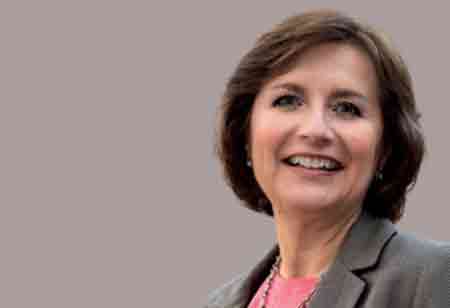THANK YOU FOR SUBSCRIBING

How Far has GIS Evolved?
Tiia Palvimo, Head of GIS, Ramboll

 Tiia Palvimo, Head of GIS, Ramboll
Tiia Palvimo, Head of GIS, RambollGeographic Information Science (GIS) might not be a term that one often comes across, but the applications of GIS are certainly something they observe on a daily basis. From mobile network services and interactive maps to food delivery applications, everything relies on GIS technology (GIST) to function effectively. However, the growth of GIST has slowed down over the years, directly affecting the many business development opportunities for various enterprises on an international scale.
In an exclusive interview with Applied Technology Review Europe, Tiia Palvimo, head of GIS, Ramboll, shares her valuable insights on how the evolution of GIS, and the best practices followed by the company, has helped Ramboll overcome its unique challenges and secure a strong footing in the global marketplace.
Evolution of GIS
Earlier, geographic information systems were mostly based on desktop software in the market. GIS analysts used such software to make printable maps for navigation. These were complex for the end-users to comprehend and utilise to its full capacity. Understanding this gap in the industry, tech giant Google introduced Google Maps, an interactive web application based on GIS, providing a better experience for the consumer. Furthermore, GIS started playing an important role in our private lives after the introduction of smartphones, which quickly grew in popularity. This allowed GIS to gain a more general usage among people across the world. This technology is a way to understand the earth, where we live, how different networks are connected, and how various decisions are affecting multiple areas around our cities.
Over the years, many GIS platforms have emerged. Almost every facet of all industries relates to GIS one way or another to solve problems. It also enabled the broader utilisation of this technology by expert analysts, and other businesses as well. GIS has also helped provide a broader understanding of global trends for decision-makers, where things happen and how it is affecting their business.
Best Practices to Enrich the System
From the technical perspective, there is a growing need for GIS professionals to leverage web-based GIS better and enjoy the benefits that such applications deliver. The results should be shared in an interactive manner with the end-users to help them understand, regardless of whether they are business decision-makers or GIS experts. Apart from the technology, it is equally important to understand the industry as well. Anyone in this career path should be flexible in adapting to the modern technologies and learning new things.
If you are a GIS analyst working for a retailer, you need to know the basic logic of the industry. This would help in providing the good information to the decision makers based on the latest analytics. Businesses in Finland, for instance, utilise WebGIS to improve online services and applications on phones extensively. The emphasis placed on the technology is rather strong; insomuch that students are taught desktop GIS software in schools and universities.
“Geographic Information Science is a way to understand the earth, where we live, how different networks are connected, and how various decisions are affecting multiple areas around the city we live in.”
It is important for professionals in the GIS industry to know both how to use each tool and analyse the results in multiple ways, other than printable maps and PDF documents. Along with the continuous evolution of technology, the industry is also changing rapidly. Individuals who wish to build a career in this field must be ready for change and adapt.
Experiences that Helped Ramboll
Ramboll Finland has a very large network in the country as well as across the globe. It has several GIS professionals who do various analyses and visualisations for customers regularly. Based on the results from each analysis, decision-makers are given ideas on how they can benefit by utilising GIS to do things in a new and different way.
Being a sustainable partner to its customers has been crucial for Ramboll’s success. GIS is an important element that can be visualised, measured, and analysed to formulate concrete, understandable, measurable, and actionable sustainability goals. An example of this scenario is the circular economy problem. With the help of GIS technology, a better understanding of the overall picture for the circular economy network can be achieved and sustainability goals can be set to overcome any and all supply chain issues.
Conclusive Note
In the coming years, the best way of doing business might not be the typical way. When you are a leader, you need to constantly think about the consistency of your business and what the future would be like for the company. The decision-makers need to be aware of the changes and adapt to new ways of decision making. It is important to take risks in order to achieve the goals of an organisation. The best method to improve the business is by trial and error. If the process does not work, learn from it, change it, move forward, and try again. GIS has not been utilised in the last twenty years to its fullest extent even after its predominant presence in all our lives. There are a lot of possibilities yet to explore in GIS. However, executing the same requires a braveness to try out new ways, the curiosity to test and learn from them, and to create better things, effectuating a more sustainable business in the future.
Read Also






















ON THE DECK